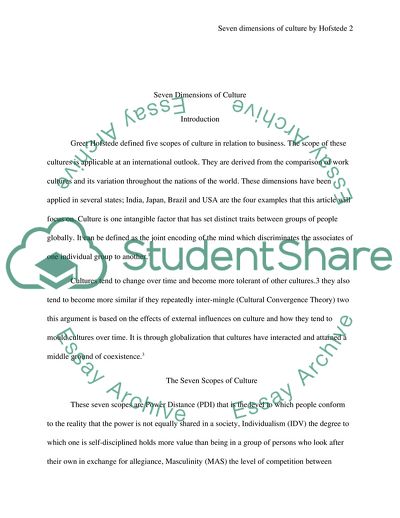Cite this document
(Seven dimensions of culture by Hofstede Essay Example | Topics and Well Written Essays - 2000 words, n.d.)
Seven dimensions of culture by Hofstede Essay Example | Topics and Well Written Essays - 2000 words. https://studentshare.org/business/1822247-seven-dimensions-of-culture-by-hofstede
Seven dimensions of culture by Hofstede Essay Example | Topics and Well Written Essays - 2000 words. https://studentshare.org/business/1822247-seven-dimensions-of-culture-by-hofstede
(Seven Dimensions of Culture by Hofstede Essay Example | Topics and Well Written Essays - 2000 Words)
Seven Dimensions of Culture by Hofstede Essay Example | Topics and Well Written Essays - 2000 Words. https://studentshare.org/business/1822247-seven-dimensions-of-culture-by-hofstede.
Seven Dimensions of Culture by Hofstede Essay Example | Topics and Well Written Essays - 2000 Words. https://studentshare.org/business/1822247-seven-dimensions-of-culture-by-hofstede.
“Seven Dimensions of Culture by Hofstede Essay Example | Topics and Well Written Essays - 2000 Words”. https://studentshare.org/business/1822247-seven-dimensions-of-culture-by-hofstede.


